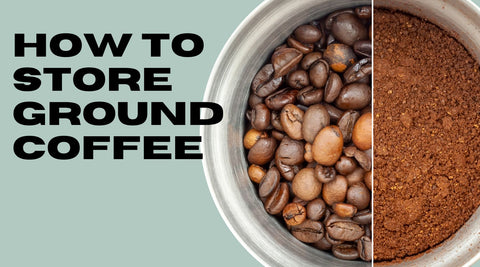Millions of people enjoy coffee, transforming their mornings into more bearable experiences. Despite its widespread popularity, not many are familiar with the intricate process behind their beloved beverage. There's a complex journey involved, much more than just pouring hot water over coffee grounds.
This article explores everything from the initial planting of coffee trees to the final stages where it reaches your cup. It covers various stages in between, such as wet processing, natural processing, and coffee roasting, providing a comprehensive look at the life of whole coffee beans and ground coffee.
Planting the Tree
Planting a coffee tree requires attention to climate, as these plants thrive in specific regions known as the coffee belt. This includes locations like Indonesia, Ethiopia, and various Latin American countries. The choice of species affects the timeline to fruit-bearing. Robusta coffee trees usually start producing fruit within 2 years, while arabica coffee plants take around 3-4 years. Although initial harvests may be small, the quantity of coffee fruit increases as the tree matures. This gradual improvement rewards patience and care in cultivation.
Harvesting
When coffee cherries mature and reach ripeness, they are ready to be harvested. Many farmers prefer manual picking to select only the ripe cherries. Mechanical harvesting is more common on larger commercial farms. This method involves machinery which expedites the process, though it may not be as selective as hand-picking.
Sorting and Selecting
Freshly picked cherries must go through a sorting and selecting stage. During this stage, any unwanted materials such as twigs, defective beans, or debris are removed. This process is different from grading, which occurs at a later stage. Attention to detail at this point ensures a higher quality product.
Pulping and Processing Coffee
Once the cherries are sorted, they are typically pulped using a pulping machine unless processed by the natural method. The natural method allows the beans to dry inside the whole cherry. There are also fermentation-inspired methods where beans ferment within the fruit itself.
For other common processes, like the wet method, the outer skin is removed to expose the coffee bean. Depending on the specific processing technique, some of the fruit’s flesh might still stay on the bean.
Fermenting
Some pulped beans transition to the fermentation stage, where they rest in water-filled fermentation tanks. This stage aids in removing mucilage and results in distinctive flavor profiles. Careful monitoring during this process is essential for achieving optimal results. If the wet processing method is employed, the beans are rinsed after fermentation. Once fermented, the beans proceed to the next stage.
Drying
Beans must be dried in every processing method. While wet-hulled beans are still more humid than others, they eventually dry as well. In sunny regions, beans are typically laid out on raised beds or patios to absorb the sunlight. In places with unreliable sunlight, mechanical dryers assist with this phase. The drying step is crucial in the coffee production process.
Storing
Once dried, green coffee beans need careful storage to maintain their quality. These beans are kept in controlled environments to shield them from external factors. They may remain in storage for several months before moving to the next stage of processing. Proper storage is essential to preserve the beans' flavor and freshness.
Milling
In the milling process, the final layers and any debris are taken off the beans. This step makes sure the coffee beans are clean and prepared for the next stages.
Grading/Cupping
Coffee beans undergo a detailed grading and cupping process. Experts examine the beans for attributes such as size, weight, and quality. This process ensures consistency in flavor.
Benefits include:
- Flavor consistency
- Identification of exceptional beans
Grading helps recognize beans that might fetch higher prices in specialty markets. This meticulous evaluation guarantees that only the best beans make it to your cup.
Distribution
The beans are packaged and prepared for global travel. Comprehensive coffee distribution networks then transport them to roasters across the world.
Roasting Process
Roasting transforms green coffee beans into aromatic brown beans. This process, often undertaken by professional roasters with advanced equipment, gives beans their distinct shades of brown, ranging from light golden to nearly black. Roasting is crucial in determining the flavor profile of the coffee.
- Light Roast: Mild flavors, retaining more acidity
- Medium Roast: Balanced flavors and acidity
- Dark Roast: Bold, robust flavors with reduced acidity
While you're here, why not browse our coffee offerings?
Packaging
After roasting, another essential packaging step occurs to ensure the beans remain fresh. Proper packaging preserves the beans' quality until they reach their next destination. This step is crucial for maintaining flavor and aroma.
Grinding
The grind level and quality significantly impact the brewing process. Coffee enthusiasts can either purchase coffee that's ready to brew or grind it at home. It's essential to match the grind to the brewing method: coarse for French press and cold brew, medium for drip, and finely ground for espresso.
Freshly grinding roasted beans at home, particularly arabica beans, enhances the freshness of the coffee. This allows for a brew that's at its peak quality, especially if they also handle their own roasting process.
Consistently using the proper grind level ensures the best flavor and aroma.
Brewing Coffee
Brewing coffee is the process where hot water extracts the flavors from ground beans. Various methods achieve this, including:
- Espresso machines: High pressure extraction
- Automatic coffee makers: Slow drip method
- Manual pour-overs: Controlled, manual process
Each technique offers a unique taste experience.
Drinking
Once the coffee is brewed, it’s ready to be enjoyed. One can simply pour it into a cup and drink it black. Many people prefer adding milk, whether it’s dairy or plant-based. Adding sugar, whipped cream, or coffee syrups is another popular choice. The possibilities are numerous to tailor the perfect cup of coffee to individual preferences.
Final Thoughts
The journey of coffee from plantation fields to the cup in your hand involves countless individuals. Many play a part, including farmers nurturing the beans, operators working in mills, and employees in distribution, roasting, and sales. Each person’s work contributes to the creation of the cherished drink. The next time you savor a cup of coffee, remember the extensive effort made by those in the industry. Each sip is a testament to their hard work and dedication. Enjoy your coffee knowing its profound journey.



